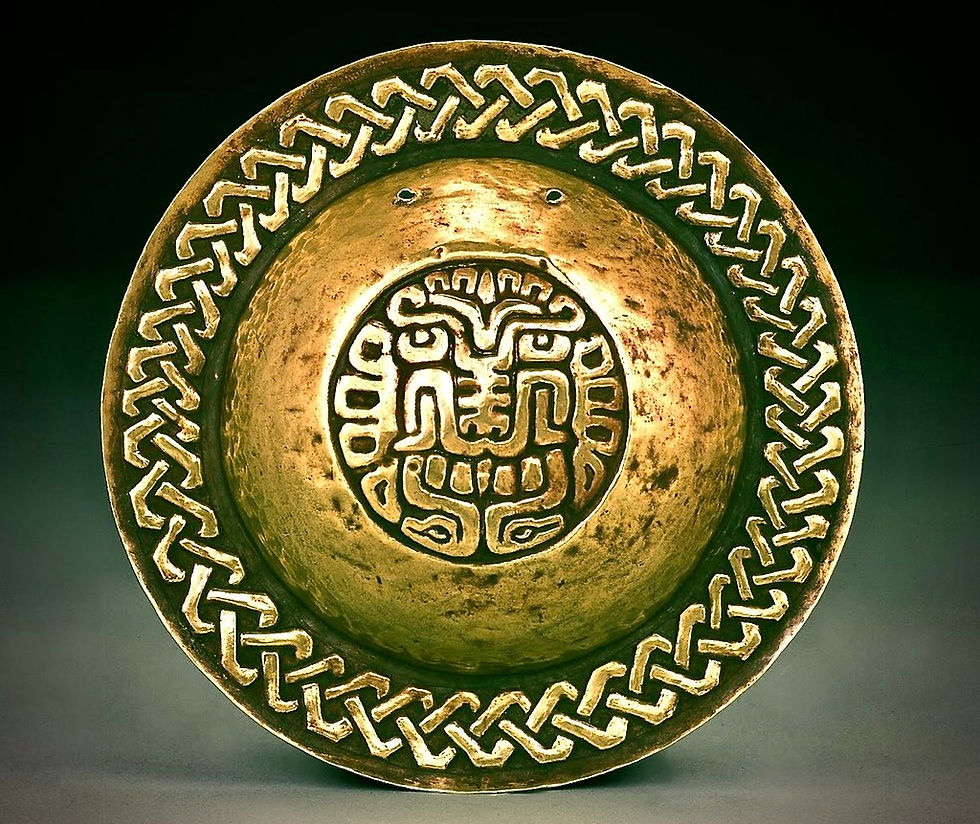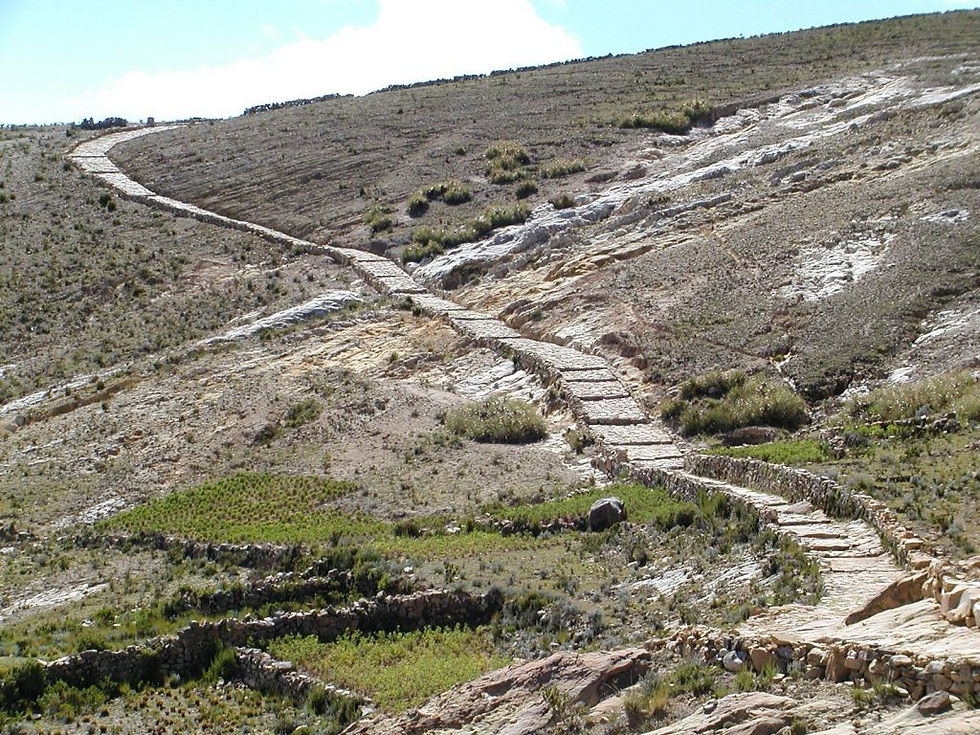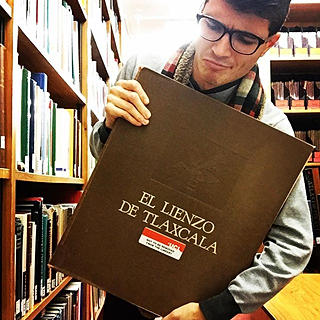A brief historical and cultural overview of pre-Hispanic Peru
- Alessio Pimpinelli
- Dec 18, 2022
- 6 min read
Updated: Apr 19, 2023
Peru is a rich, variegated land which has seen the rise and decline of several cultures and civilisations throughout the millennia. The enormous variety and coexistence of ecological systems – coastal valleys, mountainous highlands, jungle lowlands - provided suitable settings for the growth and development of many organised, complex societies.
The first urban settlements, characterised by a large-scale communal architecture, emerged in an area north of Lima around 3000 BC. Today archaeologists label this culture “Norte Chico” or “Caral”.
Around 900 BC we witness the rise of the so-called “Chavín” culture (ca. 900-200 BC), which takes its name from its centre of origin, located on the central-west coast: Chavín de Huantar. The Chavín developed a set of sophisticated engineering skills: for instance, the devise of a complex drainage system prevented the flooding of the temple area during the rainy season. The Chavín already knew how to work metals at an advanced stage, especially when it came to goldsmithing. Moreover, the domestication of the llama and of other camelids can be dated back to this period. Thanks to the development of a fruitful irrigation system, the Chavín began cultivating quinoa, potatoes and maize.

An example of a Chavin breastplate. Image by Peter Tillman.
The south-western coastal area was characterised by the flourishing of the Nazca culture (ca. 100 BC – 750 AD), famously renown for its “Lines” - geoglyphs whose significance is still debated by scholars. Less famous, but nonetheless important, are the polychrome pottery and the complex, advanced textiles produced by these people. Another peculiar feature of the Nazca were the puquoios, underground water channels that enabled the development of agriculture and that are still functioning today.


An example of Nazca pottery. Image by Jim Steinhart
An example of Nazca textiles. Image taken from the website latinamericanstudies.org
On the north-western coast the Moche culture (ca. 100 – 700 AD) stands out for its painted ceramics and its wakas, a noun which generally indicates something to be revered. From the Moche derived the Chimú culture – or Chimor (ca. 900-1400 AD), whose people were later defeated and incorporated into the growing Inca state by Topa Inca. The Chimú were highly-skilled metal workers whose ability was also later exploited by the Incas. Another peculiarity of theirs was the monochromatic pottery they used to produce.
Central Peru and the southern Andean region saw the co-existence of two cultures which together formed the cultural core of the later Inca state: Wari (ca. 600 – 1100 AD) and Tiwanaku (ca. 100 – 1100 AD). Wari had already developed a sophisticated system of integrated settlements and roads which was further expanded by the Incas. Its characteristic ceramics and textiles were spread throughout the central Andes and it was the Wari people who invented the khipu, the famous knotted administrative tool. Tiwanaku, located on the shores of Lake Titicaca, is famous for its large stone monuments which bear carvings and symbols related to the local religious beliefs. This area was also characterised by a particular devotion of the Sun cult. It is probably from here that a lot of the later Inca religious beliefs originated.

An example of khipu, through which messages were passed on the basis of a sophisticated code of colours and knots. Image by Jon Chase, Harvard University.
The Incas
The most famous civilisation of Peru is nevertheless the Inca (ca. 1300 – 1572 AD). The Incas built an empire which stretched from north Ecuador to central Chile and north-western Argentina, from the Pacific coast in the west to the edge of the Amazonian lowlands in the east. The Inca polity became the largest pre-Columbian state in the Americas and it was known as Tawantinsuyu, that is, “the four parts together”.
Around the 1350s, the Incas began dominating their neighbours in the Cuzco area, where their heartland was located. Expansion was carried out mainly through political marriages and economic alliances, the latter especially in the southern areas. The traditional Inca version of the events, which has been preserved in later chronicles, has in the figure and deeds of the Inca Pachakuti a turning point in Inca history. Pachakuti (lit. “transformer of the world”, around 1438-1471 AD) is credited with the first expansion outside the Inca heartland. The semi-legendary narrative of the Chanka wars, ended in 1438, is particularly meaningful as it shows how the events were later reshaped in a ‘mythical’ way in order to glorify and legitimise the authority of Inca rule over their foes (a similar process happened among the Aztecs of Central Mexico). Pachakuti was also credited with the rebuilding of the capital Cuzco and its embellishment with its most famous monuments, including the Qorikancha – the state temple of Inti, the Sun.
Pachakuti’s successors – Topa Inca (1471-1493 AD) and Wayna Qhapaq (1493-1524/1528 AD) – continued the process of ‘empire-building’, expanding both north and south of the Cuzco Valley. However, modern archaeological finds tend to challenge such a traditional view of Inca expansion since the unearthed material record testifies that the incorporation of surrounding regions had already begun at the beginning of the fifteenth century AD.

A map of the gradual expansion of the Inca state, by Dennis Ogburn (2012).
Wayna Qhapaq died around 1524-1528 AD due to what probably was smallpox, a disease carried by the Europeans, who by that time had already started navigating down the west coast of South America. At his death a civil war broke out between his two sons Waskar and Atawallpa, who fought for the role of Sapa Inca. The civil war was eventually won by Atawallpa in 1532, but it greatly contributed to weaken the Inca state just at the eve of the Spanish invasion.
In November 1532 Francisco Pizarro landed on the Peruvian shore and, by the end of the following year, Atawallpa had been murdered and the Cuzco region had been occupied by the European invaders. The new ruler Manco Inca, another son of Wayna Qhapaq, fled to the jungles of Vilcabamba, where the Incas resisted to the Spaniards until 1572. In this year the last formal Inca ruler, Tupac Amaru, was captured by the Spanish and executed, thus putting formally an end to the Inca political autonomy in the region.
As already mentioned above, the Incas appropriated some cultural features of their predecessors in the central Andean region, Wari and Tiwanaku. A basic, but efficient bureaucratic system was developed, and records were kept through the use of khipus. Quechua, the language spoken by the Incas, was spread throughout the empire, especially to the northern regions. The smooth and regular stonework characteristic of Inca masonry can still be admired in many sites scattered across Peru, such as Machu Picchu, Pisaq and Ollantaytambo in the Urubamba Valley.
The terracing of mountain slopes (famous remnants are at Moray) provided a larger quantity of agricultural soil through which it was possible to feed and maintain an ever-growing population.
Communication was quickened through the development of an efficient network of bridges and roads which stretched across the different parts of the empire. The most famous and important artery of the Inca state was the Qhapaq Ñan, the “royal road”, which linked Cuzco to Quito, in present-day Ecuador.

The Inca roads, true "arteries of the state", facilitated the integration and the control of the different components of the empire by the centre. Image from the website andeanlodges.com
Women played a prominent role in Inca society. Many deities of primary importance were female, such as Mama Quilla (the moon), Pachamama (the earth) and Mama Cocha (the waters).
The Qoya, or queen, enjoyed the same status and importance granted to her consort, the Sapa Inca, and had an active role in important political affairs. She was granted lands and herds, and mummies of queens were preserved and worshipped along their husbands’.
A special category of women was the aqlla or “chosen women”. Such women worked in temple complexes and storehouses and used to weave fine cloths and brew chicha beer. Moreover, they played a fundamental role in establishing alliances with local, regional elites by marrying into them.
Many people still wonder why such a powerful and extensive state such as the Inca fell under the yoke of few Spanish soldiers. In order to answer such a question, many elements must be taken into account. The technological superiority of the Spaniards undoubtedly played a crucial role, along with the diseases that the Europeans brought over with them and which had already affected the native populations even before the beginning of the military conquest itself. Moreover, we must not forget how the two sides saw warfare in different ways. On the one hand, the Spanish conceived war as a military conquest which involved plundering and the establishment of new European settlements on native lands. On the other hand, the Inca concept of warfare was deeply embedded with ritualism. Features like the suspension of battle at every New Moon were quickly exploited by the Spaniards and contributed to the rapid decline and annihilation of the Inca polity.
Further Reading
D’Altroy, T. 2002. The Incas. Malden, Mass.; Oxford: Blackwell.
Haas, J., Piscitelli, M. and Jandiveiss, D. 2012. The Rise of Andean Pre-Inca Civilizations (2nd edition). Oxford: Oxford University Press.
Morris, C. and Von Hagen, A. 2011. The Incas: lords of the four quarters. London: Thames and Hudson.
Moseley, M. E. 2001. The Incas and their ancestors: the archaeology of Peru (rev. ed.). London: Thames and Hudson.

Macchu Picchu, probably the most iconic Inca vestige of all. Image from the website lonelyplanet.com
.png)



Comments